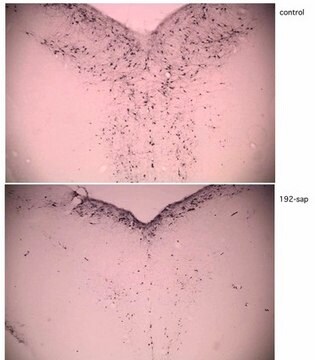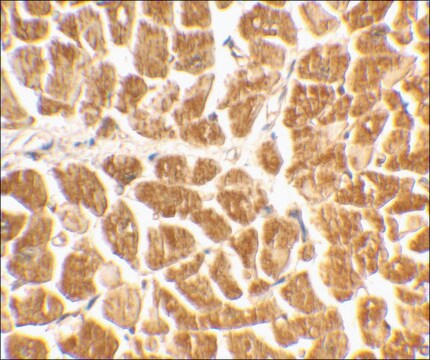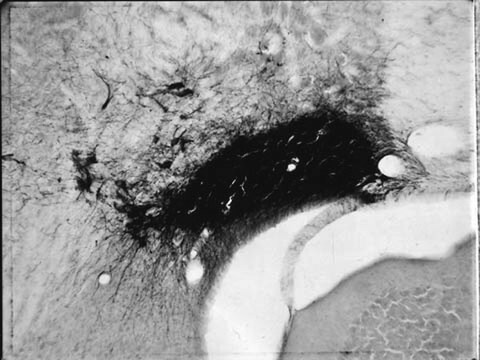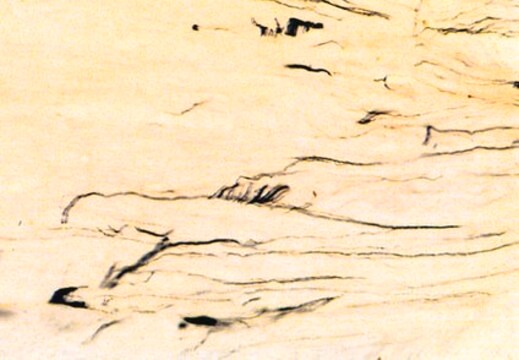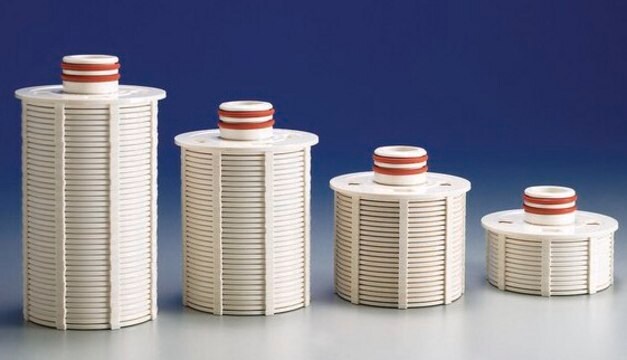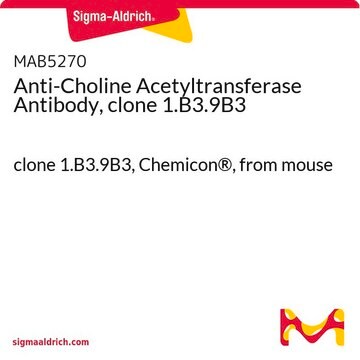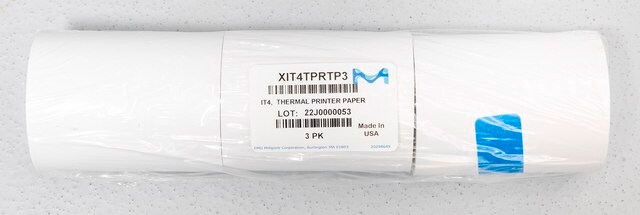MAB394
Anti-Dopamine β Hydroxylase-SAP Antibody, clone 4F10.2
clone 4F10.2, Chemicon®, from mouse
Faça loginpara ver os preços organizacionais e de contrato
About This Item
Código UNSPSC:
12352203
eCl@ss:
32160702
NACRES:
NA.41
Produtos recomendados
fonte biológica
mouse
Nível de qualidade
conjugado
saporin
tipo de produto de anticorpo
primary antibodies
clone
4F10.2, monoclonal
reatividade de espécies
rat
embalagem
antibody small pack of 25 μg
fabricante/nome comercial
Chemicon®
técnica(s)
immunolesioning: suitable
Isotipo
IgG1
nº de adesão NCBI
nº de adesão UniProt
Condições de expedição
wet ice
modificação pós-traducional do alvo
unmodified
Informações sobre genes
rat ... Dbh(25699)
Categorias relacionadas
Especificidade
Dopamine b-HydroxylaseDBH is a single gene product that exists as a cytosolic enzyme, as a membrane protein and is secreted into the circulation (Lewis & Asnani, 1992). Because of its residence time as a plasma membrane-bound protein, it is able to be used as a targeting agent for neurons. The target neurons include postganglionic sympathetic neurons and all noradrenergic and adrenergic neurons of the central nervous system. As such anti-DBH-SAP can be used for the production of acute peripheral autonomic failure in a model for the human disease. It can also be used for the analysis of the behavioral effects of noradrenergic or adrenergic ablation. When injected intraventricularly, noradrenergic neurons of the locus coeruleus are eliminated (Wiley & Lappi, 1994). The antibody and immunotoxin undergo retrograde transport.
Aplicação
Anti-Dopamine β Hydroxylase-SAP Antibody, clone 4F10.2 detects level of Dopamine β Hydroxylase & has been published & validated for use in 0.
Outras notas
Concentration: Please refer to the Certificate of Analysis for the lot-specific concentration.
Informações legais
CHEMICON is a registered trademark of Merck KGaA, Darmstadt, Germany
Não está encontrando o produto certo?
Experimente o nosso Ferramenta de seleção de produtos.
Certificados de análise (COA)
Busque Certificados de análise (COA) digitando o Número do Lote do produto. Os números de lote e remessa podem ser encontrados no rótulo de um produto após a palavra “Lot” ou “Batch”.
Já possui este produto?
Encontre a documentação dos produtos que você adquiriu recentemente na biblioteca de documentos.
Yuefeng Lu et al.
Anatomical record (Hoboken, N.J. : 2007), 295(7), 1192-1201 (2012-06-08)
Locus coeruleus (LC) consists of a densely packed nuclear core and a surrounding plexus of dendritic zone, which is further divided into several subregions. Whereas many limbic-related structures topographically target specific subregions of the LC, the precise projections from two
C C Wrenn et al.
Brain research, 740(1-2), 175-184 (1996-11-18)
The ability to create lesions of discrete neuronal populations is an important strategy for clarifying the function of these populations. The power of this approach is critically dependent upon the selectivity of the experimental lesioning technique. Anti-neuronal immunotoxins offer an
Soluble and membrane-bound forms of dopamine beta-hydroxylase are encoded by the same mRNA.
Lewis, E J and Asnani, L P
The Journal of Biological Chemistry, 267, 494-500 (1992)
M J Picklo et al.
The Journal of pharmacology and experimental therapeutics, 275(2), 1003-1010 (1995-11-01)
Anti-dopamine beta-hydroxylase immunotoxin (DHIT) is an antibody-targeted noradrenergic lesioning tool comprised of a monoclonal antibody against the noradrenergic enzyme, dopamine beta-hydroxylase, conjugated to saporin, a ribosome-inactivating protein. Noradrenergic-neuron specificity and completeness and functionality of sympathectomy were assessed. Adult, male Sprague-Dawley
Carlos Blanco-Centurion et al.
The Journal of neuroscience : the official journal of the Society for Neuroscience, 27(51), 14041-14048 (2007-12-21)
The hypocretin (HCRT) neurons are located only in the perifornical area of the lateral hypothalamus and heavily innervate the cholinergic neurons in the basal forebrain (BF), histamine neurons in the tuberomammillary nucleus (TMN), and the noradrenergic locus ceruleus (LC) neurons
Nossa equipe de cientistas tem experiência em todas as áreas de pesquisa, incluindo Life Sciences, ciência de materiais, síntese química, cromatografia, química analítica e muitas outras.
Entre em contato com a assistência técnica